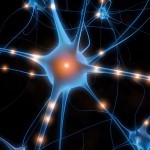 AIT: A BRIEF INTRODUCTION
AIT: A BRIEF INTRODUCTION
I’ve been a psychologist for a long time now, and I’ve trained in and used a huge number of therapeutic strategies. But I have never been so excited about any form of therapy as I am about AIT. Advanced Integrative Therapy [AIT] is an exciting and powerful new energy psychology that is particularly effective at removing the effects of emotional trauma. I have found AIT to be an incredibly efficient and effective, yet very gentle way of treating a range of issues with adults and children of all ages.
How AIT Works
AIT works on the holistic principle that our mind, body and energy fields are interconnected, and that traumatic memories are often trapped in our nervous system throughout our bodies. These trapped memories affect our interactions with the world, and can create traumatic patterns or dysfunctional beliefs about ourselves and our world. These can lead to phobias, relationship problems, challenging behaviours, anxiety, depression, anger, self-harm, low self-esteem, and somatic illnesses.
AIT is based on the premise that traumatic memories and their emotional charge are stored throughout the body, not just in the brain. To get a sense of this, if you reflect on a past upsetting experience of your own, you might feel some sort of a sensation or discomfort in your throat, stomach, heart, or another part of your body.
What Happens
The AIT therapist helps the client to identify the issues using their therapeutic and interactive counselling skills, and then uses muscle testing, or applied kinesiology, to confirm the treatment decisions. Muscle testing was developed originally by a chiropractor, and adopted enthusiastically by alternative health practitioners, such as naturopaths and allergy specialists. I have found that muscle testing to be a wonderful tool to use in psychological therapy. It involves gently feeling resistance, or lack thereof, in the client’s muscles in response to particular statements. The muscle goes weak when the statement is false and stays strong when it is true. It is a really good way of tuning into the client’s unconscious [or internal computer], and can be a fun way to engage children and adults, especially those who are unsure of the cause of their emotional difficulties, or who find language or talking about feelings difficult.
Once the cause of the problem has been determined, the AIT practitioner guides the client to hold certain points on their body, to stimulate the nervous system, while labelling the trauma in a simple way. The client stays mindful of their body, and relaxes with their breath through this process, while witnessing the memories, thoughts, feelings, and sensations as they come and go.
This gently and effectively clears the blocked trauma from the nervous system, so the client is soon able to remember the experience without feeling the uncomfortable emotions attached to it.
In a Nutshell
AIT is an incredibly powerful therapy, but doesn’t require the uncomfortable, long-winded catharsis of tears and talk of many other therapies. Change is quick and gentle, yet monumental. As I said, very very exciting stuff.
I practice AIT in person in Coulsdon and Brighton and Hove, UK, and via telephone or Skype to the rest of the world. Feel free to contact me if you would like to find out more. You can leave a comment here.
I really look forward to hearing from you.
Lorri Craig
PS To find out more about AIT and who might be practicing it near you, go to the AIT UK and Europe or the USA AIT Institute websites.
